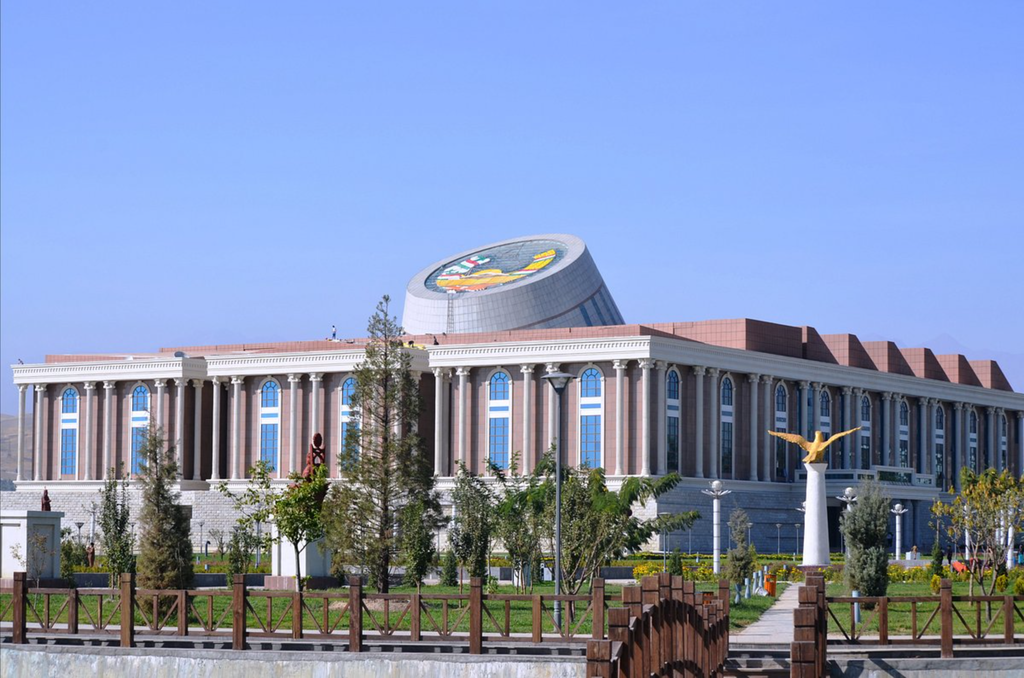National Museum of Tajikistan

- The National Museum of Tajikistan, located in Dushanbe, is the country’s premier institution dedicated to preserving and showcasing its rich history, culture, and natural heritage. Established in 1934, the museum has undergone significant renovations and now stands as a modern, four-story building with an elegant architectural design. It serves as a cultural gateway into Tajikistan’s past, offering visitors an immersive journey through the nation’s diverse history, art, and natural wonders.
- The museum is divided into several sections, each covering a distinct aspect of Tajikistan’s heritage. The archaeology and history wing features artifacts dating back thousands of years, including ancient coins, pottery, manuscripts, and tools from various periods, such as the Achaemenid, Greco-Bactrian, Samanid, and Timurid empires. One of the most impressive exhibits is the Buddha in Nirvana, a massive, 13-meter-long reclining Buddha statue from the 7th century, discovered at the Ajina-Tepa archaeological site. This masterpiece is regarded as one of the largest and most significant Buddhist relics in Central Asia.
- The ethnographic section provides insight into the daily life, customs, and traditions of Tajikistan’s diverse ethnic groups. Traditional Tajik clothing, jewelry, musical instruments, and carpets are on display, showcasing the region’s vibrant craftsmanship. Meanwhile, the fine arts gallery houses paintings and sculptures by renowned Tajik artists, highlighting the evolution of artistic expression in the country. The museum also includes a natural history section, displaying an array of fossils, minerals, and taxidermy specimens, offering visitors a glimpse into Tajikistan’s rich biodiversity and geological history.
- The National Museum of Tajikistan is not only a repository of history but also an educational and cultural center. It frequently hosts temporary exhibitions, lectures, and cultural events to promote Tajik heritage. Its modern design, well-lit exhibition halls, and multilingual information panels make it an inviting space for both locals and tourists. Whether you are a history enthusiast, an art lover, or someone interested in Tajikistan’s unique traditions, a visit to this museum offers a deep and enriching experience that captures the essence of the nation.
